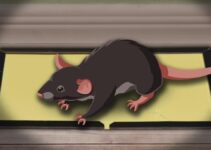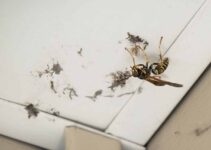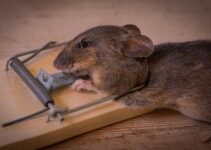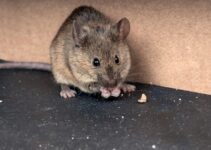Most of the time, wasps enter homes through open doors and windows. However, if you have your windows perfectly sealed and you notice wasps inside your home, you might wonder if It is possible for wasps to enter your home through the same closed windows or other areas of your home.
In this guide, we will reveal how wasps can still pose a problem in your home, even though you’re very careful. We will also talk about how to get rid of wasps completely.
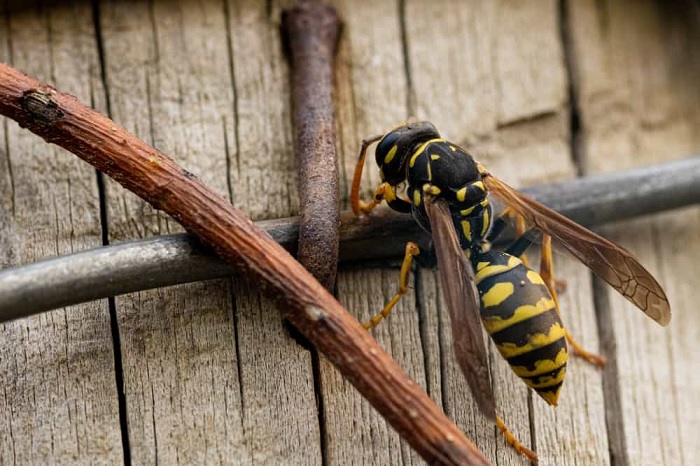
Can Wasps Get In Through Closed Windows?
If you installed window screens with fine mesh and ensured that there are no cracks big enough for a wasp to get through, then no! A wasp would not be able to get through your closed window. However, if you skipped the process above, then you could be dealing with some cracks in your window.
How Do Wasps Get In Through Closed Windows?
If you have all the right facilities and closed your window, but you still noticed wasps in your home, there are several reasons for this.
1. From Nests Already In Your Home
If your windows have been sealed, but you still notice wasps in your home, it is likely that they come from nests they’ve already built in your home.
Wasps start building these nests in the spring, but the process starts a bit earlier, in the late fall.
Before winter comes, two important things happen to the wasps. The male wasps mate with the female wasps, and the pregnant female wasps make small nests and lay eggs. Once the male wasps finish mating, they die.
This is why you might see slow-moving wasps in your house. These are usually male wasps that are dying. They crawl around on the floor or near windows.
The eggs that the pregnant female wasps laid before winter will hatch. These baby wasps grow up and become adult wasps by the time spring comes. So, the wasps you see in your house, even when the windows are closed, are mostly wasps that came out of their nests inside your home.
2. Wasps Coming Out Of Hibernation
Chances are you already have wasps in your home that have been there since winter. They hide in places like walls, attics, basements, and storage areas where it’s warm and you don’t usually go. There, they hibernate. When the weather gets warmer and they wake up from hibernation, you might see.
3. Wasps Entering Though Other Openings
Wasps can find their way into your house through various openings besides open doors and windows. They can use vents in places like your bathroom, kitchen, basement, and chimneys. Even small gaps or holes in window frames, window sills, and walls can serve as entry points for wasps and hornets.
During late fall, wasps might not only enter homes to hibernate but also search for different sources of food. This is because their outdoor food supply decreases as winter approaches. To find shelter and sustenance, they may attempt to sneak inside human residences.
They exploit any available cracks or vents to gain access to your home.
Tips to Prevent Wasps from Getting In Through Your Windows
Having wasps in your home can be a problem. Chances are you’re going to get stung which can b e a painful experience. To get rid of wasps, you can follow the tips below.
1. Install Window screens
Keeping your windows closed isn’t the only thing you need to do to keep wasps. Window screens with fine mesh are one of the most effective ways at keeping wasps and other bugs out of your home. To ensure you won’t have to deal with wasps another, install windows screens on your windows and the vents in your home.
The fine mesh on the windows shields will prevent wasps from entering your home while ensuring you get some hair. This comes as a plus since you can keep the window open to get fresh air and enjoy the protection of the window shield. When you do this, you should also close the Chimney flue so the wasps won’t try to find other ways to get into your home.
2. Seal Gaps and Craps
Ensure that there are no gaps or craps in your windows and walls. While wasps might not be able to fly through them, they can crawl through these tiny cracks in walls, window frames, and doors to gain access to your home.
You can use a silicone-based sealant to patch this up. This type of sealant is waterproof, sturdy, and durable, so bugs won’t be able to chew through them.
3. Destroy Wasp Nests In Your Home
Check your home to see if there are any wasp nests. These are the source of sterile female wasps that are already buzzing in your home. Once inside your home, wasps would build their nests in places like your attics or cracks in your walls. You will need to find and destroy these wasp nests to be truly free.
To do this, you will need to use tetramethrin or prallethrin-based insecticide spray on the wasp nest. These ingredients will kill the wasps and their larvae. After an hour of spraying, use a plastic bag to cover the wasp nest and at the same time, detach the wasp nest from where it is hanging and dispose of it.
Ensure to wear protective clothing including a face shield when doing this. It might also be better to consider getting a professional pest controller to handle the situation.
Related Q&As
Are all wasps dangerous if they get inside the home?
While most wasps are not aggressive and won’t sting unless provoked, some species like yellow jackets and paper wasps can become aggressive when they feel threatened, potentially leading to stings.
How can I safely clean up after eliminating a wasp nest?
After a wasp nest has been removed or eliminated, it’s a good idea to wait for a day or two to ensure that all wasps have left.
Are there specific times of the year when wasp intrusions are more common?
Wasps are more active during the warmer months, so you’re more likely to encounter them inside your home during spring and summer.
Can I use essential oils to repel wasps from my home?
Yes, certain essential oils like peppermint, clove, and citrus oils are known to repel wasps. You can mix a few drops of these oils with water and spray the solution around windows, doors, and other potential entry points to deter wasps.
